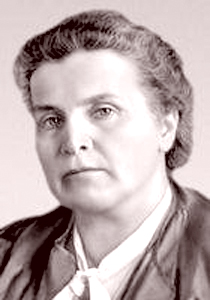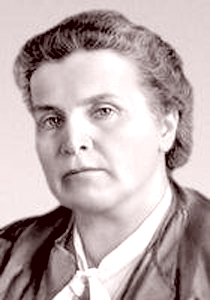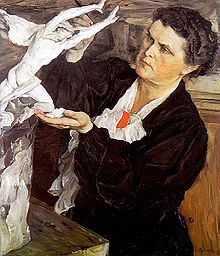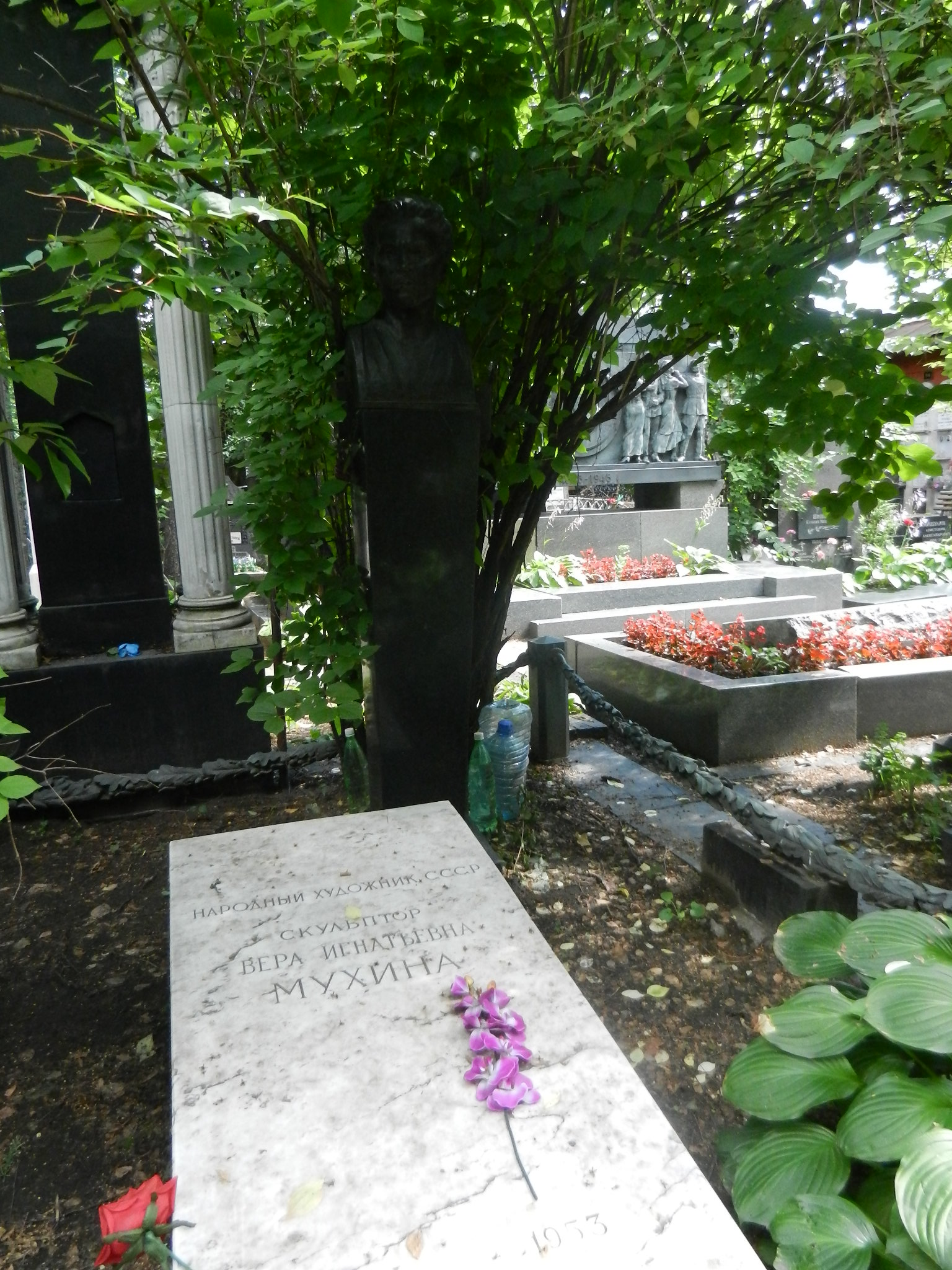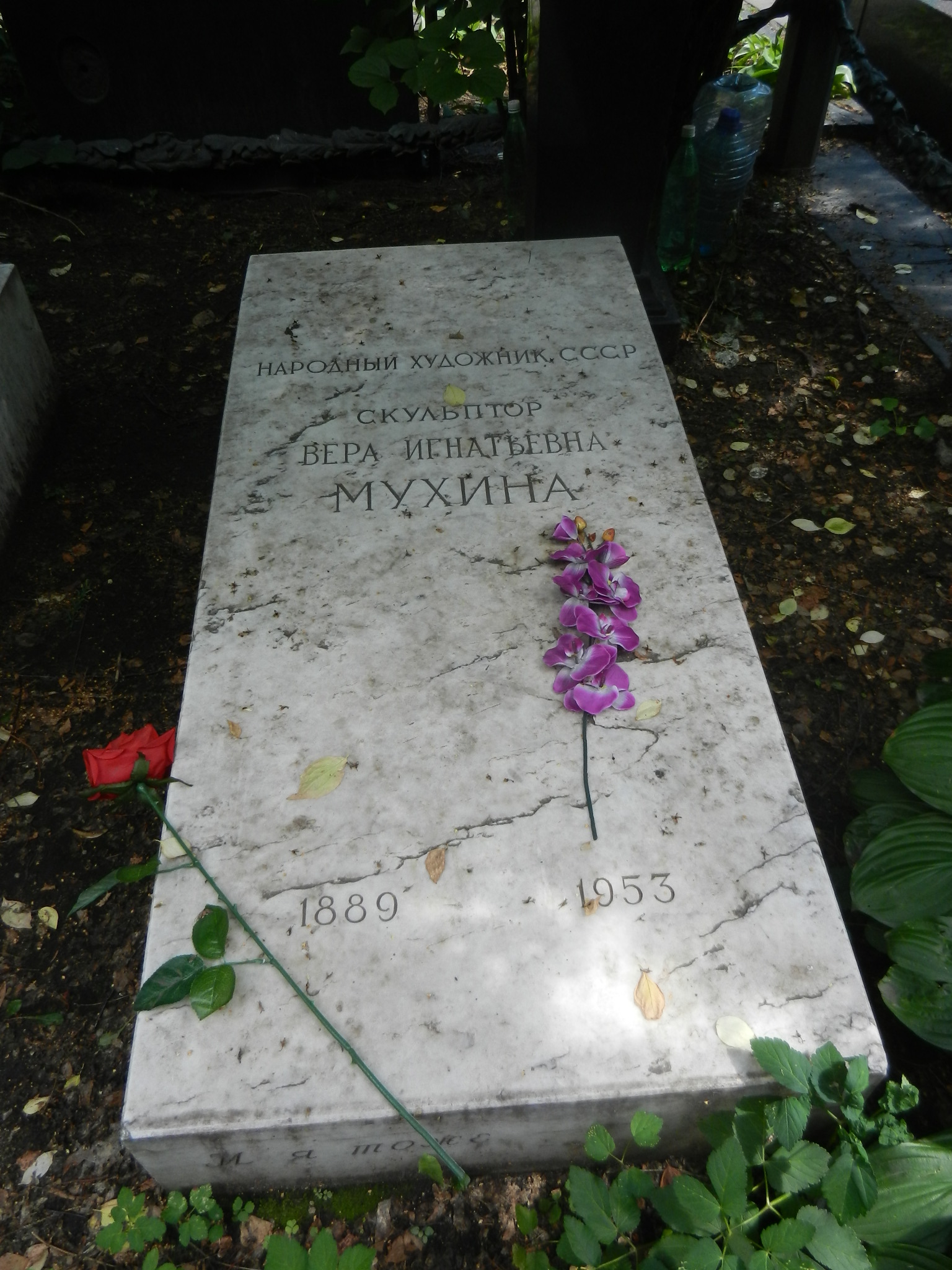In 1915 and 1916 she served as assistant to Aleksandra Ekster at Alexander Tairov's Chamber Theater in Moscow. In 1918 she married Alexei Zamkov, a military surgeon.
In the 1920s Mukhina rose to become one of the Soviet Union's most prominent sculptors, and although she continued to produce cubist sculpture as late as 1922, she became a leading figure of Socialist realism, both in style and ideology. She taught at the state school, Vkhutemas, in 1926-1927, and came to international attention with the 1937 Worker and Kolkhoz Woman. Her studio's work on official monuments and architectural sculpture on state commissions continued through her death. She also experimented with glass, producing glass figural busts. According to legend, the classic Soviet faceted table-glass was designed by Mukhina.
From 1941 to 1952 Mukhina won the Stalin Prize five times, was named People's Artist of the USSR in 1943. In 1953 she wrote "A Sculptor's Thoughts".
Because of Muhkina's influence as a great Soviet artist, and as a former student of the Latvian sculptor Kārlis Zāle, she persuaded Soviet officials in the late 1940s that the Freedom Monument in Riga was of great artistic importance. Due to her efforts the monument was not demolished to make way for a statue of Joseph∼Soviet sculptor.
In 1915 and 1916 she served as assistant to Aleksandra Ekster at Alexander Tairov's Chamber Theater in Moscow. In 1918 she married Alexei Zamkov, a military surgeon.
In the 1920s Mukhina rose to become one of the Soviet Union's most prominent sculptors, and although she continued to produce cubist sculpture as late as 1922, she became a leading figure of Socialist realism, both in style and ideology. She taught at the state school, Vkhutemas, in 1926-1927, and came to international attention with the 1937 Worker and Kolkhoz Woman. Her studio's work on official monuments and architectural sculpture on state commissions continued through her death. She also experimented with glass, producing glass figural busts. According to legend, the classic Soviet faceted table-glass was designed by Mukhina.
From 1941 to 1952 Mukhina won the Stalin Prize five times, was named People's Artist of the USSR in 1943. In 1953 she wrote "A Sculptor's Thoughts".
Because of Muhkina's influence as a great Soviet artist, and as a former student of the Latvian sculptor Kārlis Zāle, she persuaded Soviet officials in the late 1940s that the Freedom Monument in Riga was of great artistic importance. Due to her efforts the monument was not demolished to make way for a statue of Joseph∼Soviet sculptor.
Family Members
Sponsored by Ancestry
Advertisement
Explore more
Sponsored by Ancestry
Advertisement
